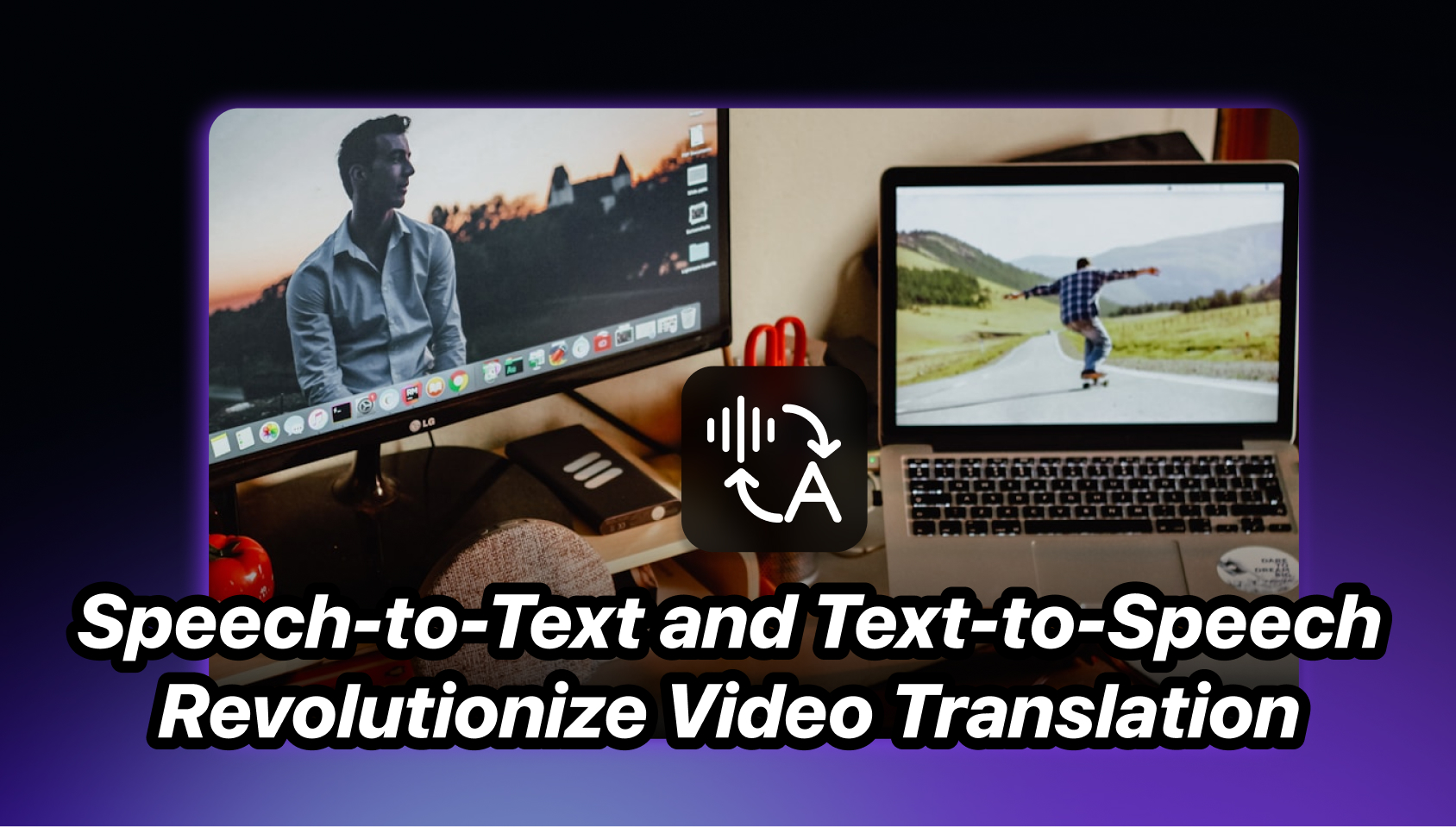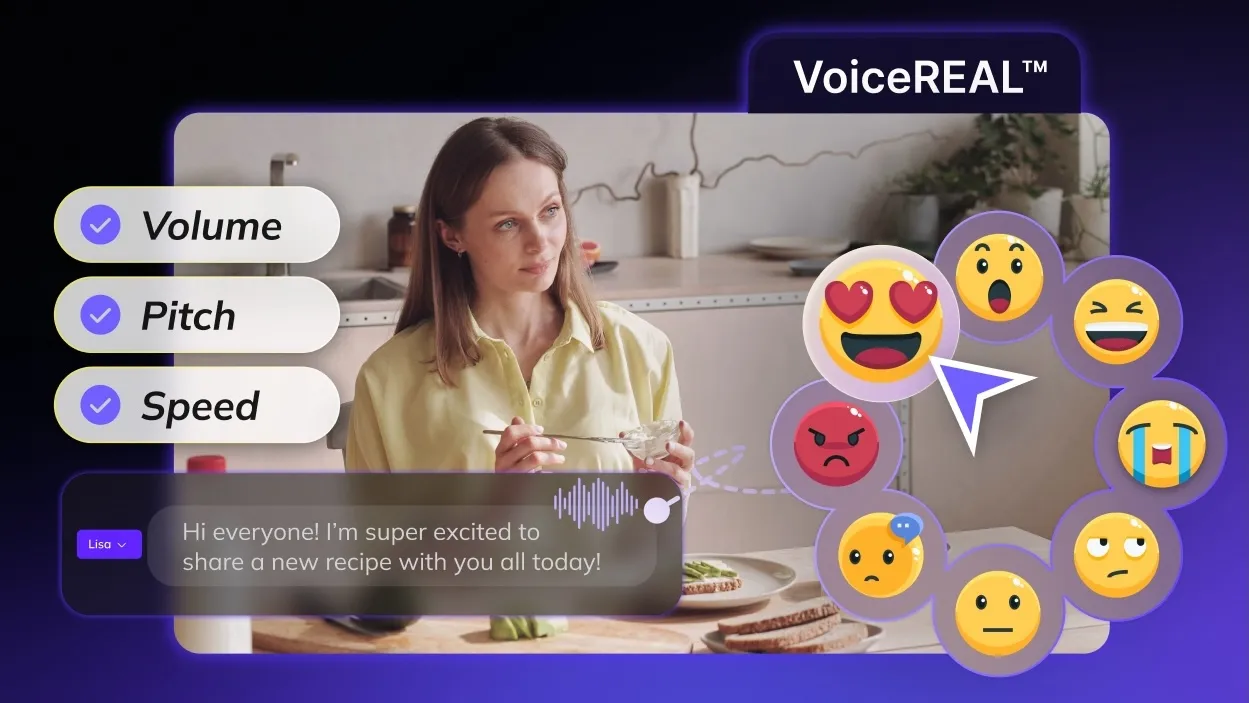Introduction
In today’s globalized landscape, video translation technology has become indispensable. The explosion of online content—from educational videos and webinars to social media clips—demands effective translation to reach diverse audiences. Video translation is not just about converting spoken words; it encompasses cultural nuances, regional dialects, and emotional tone, making it a complex process. Traditional translation methods are often labor-intensive and costly, which can be a significant barrier for creators and businesses alike. Enter Speech-to-Text (STT) and Text-to-Speech (TTS) technologies—two innovations that are transforming the video translation landscape by enhancing efficiency, accessibility, and accuracy.
What is Speech-to-Text (STT)?
Speech-to-Text technology is designed to convert spoken language into written text. The process involves several stages:
- Audio Capture: The first step is capturing audio signals through a microphone or recording device.
- Preprocessing: This involves cleaning the audio by removing noise and enhancing speech clarity.
- Feature Extraction: The audio signal is analyzed to identify phonemes and other speech features.
- Pattern Recognition: Using machine learning algorithms, the system recognizes patterns in the audio that correspond to written language.
Modern STT systems utilize advanced neural networks and deep learning algorithms to improve their performance. These models are trained on extensive datasets to recognize different accents, speech patterns, and even emotional tones.
Applications of STT in Video Translation Technology
The application of STT in video translation is multifaceted:
- Educational Content: Online courses can leverage STT to generate subtitles automatically, making learning more accessible for non-native speakers. This is particularly valuable in international education, where students from various linguistic backgrounds participate.
- Live Events: For live news broadcasts or webinars, STT can instantly transcribe spoken content into text, ensuring timely communication. This real-time capability is crucial for keeping audiences informed during breaking news or important announcements.
- Accessibility: STT technology enhances accessibility for individuals with hearing impairments, allowing them to follow along with video content through real-time captions.
- Searchability: By converting speech to text, videos become searchable. Users can quickly find specific segments of a video based on keywords or phrases, improving user engagement and content discoverability.
What is Text-to-Speech (TTS)?
Text-to-Speech technology transforms written text into spoken words, providing a way to vocalize text in a natural-sounding voice. The process includes several key steps:
- Text Analysis: The TTS system analyzes the input text for structure, syntax, and semantics. This helps it understand the context and tone.
- Phonetic Conversion: The text is broken down into phonetic components, which are essential for generating accurate speech sounds.
- Synthesis: Finally, the system uses voice models to produce speech, combining different phonetic units to create smooth and coherent audio.
Applications of TTS in Video Translation Technology
TTS technology enhances video translation in various ways:
- Narration for Educational Videos: TTS can be used to narrate educational content, making it easier for students to absorb information. This is particularly effective in e-learning platforms where users benefit from auditory reinforcement.
- Dubbing and Localization: TTS enables the quick localization of videos for different regions. Instead of hiring voice actors for every language version, businesses can use TTS to produce high-quality voiceovers, significantly reducing costs.
- Audiobooks and Podcasts: TTS has transformed the audiobook industry, allowing publishers to convert written works into audio formats. This technology also benefits podcasters, who can generate episode summaries or transcriptions.
- Interactive Experiences: TTS enhances user interactions in applications and websites, providing vocal feedback or guidance in virtual assistants and chatbots, making them more user-friendly.
How STT and TTS Revolutionize Video Translation
The integration of STT and TTS technologies offers transformative benefits for video translation, specifically in:
- Increased Efficiency and Speed: Automation through STT and TTS drastically reduces the time required for video translation. Content creators can produce multilingual versions of their videos more quickly, responding to market demands rapidly.
- Enhanced Accuracy: Modern STT systems boast high recognition rates, while TTS ensures that translated text is delivered in a natural and contextually appropriate tone. This enhances clarity and makes content more engaging.
- Cost Reduction: Utilizing STT and TTS can significantly lower the costs associated with manual translation. Small teams or individual creators can produce high-quality multilingual content without the need for extensive resources.
- Support for Multiple Languages and Dialects: STT and TTS technologies can handle various languages and dialects, allowing video content to reach a broader audience. This capability is especially crucial for global companies looking to expand their reach.
- Real-Time Subtitles and Dubbing: In situations that require immediate translation—like international conferences or live broadcasts—STT and TTS can provide quick and accurate content delivery, facilitating effective communication across language barriers.
- Content Personalization: As STT and TTS technologies evolve, they allow for more personalized content. Creators can tailor audio and text outputs to specific audiences, enhancing viewer engagement and satisfaction.
Challenges Faced by STT and TTS in Video Translation
Despite their benefits, STT and TTS technologies face several challenges:
- Accent and Dialect Handling: Different accents and regional dialects can hinder STT recognition accuracy. While advancements have been made, variations in speech still pose challenges, particularly in multilingual contexts.
- Background Noise Impact: Noisy environments can significantly affect the performance of STT systems, leading to decreased transcription quality. This is particularly problematic in outdoor settings or crowded venues.
- Emotional Tone and Inflection: TTS systems struggle to replicate the emotional nuances of human speech, which can detract from the overall viewer experience. The lack of emotional depth may make TTS-generated content feel robotic or less engaging.
- Lip-Sync Issues: Synchronizing audio with lip movements remains a challenge, especially in dubbing scenarios. Achieving precise lip-sync enhances the overall viewing experience, making it more immersive.
- Privacy and Data Security Concerns: The use of STT and TTS technologies often involves processing sensitive information. Ensuring user privacy and data security is paramount, particularly in professional settings.
Vozo AI Video Translator
Vozo AI is an advanced video translation technology solution specifically designed to streamline the creation of multilingual video content. By supporting over 61 source languages and approximately 30 target languages, Vozo AI provides robust capabilities to break down language barriers effectively.
What sets Vozo AI apart is its ability to overcome the common challenges associated with STT and TTS technologies. Here are some key features:
- Multi-Speaker Detection: Vozo AI excels in accurately identifying speakers and managing transitions. This feature is particularly beneficial for podcasts, interviews, and discussions, ensuring each speaker’s contributions are clearly attributed. It mitigates the challenge of varying accents and dialects, enhancing recognition accuracy.
- Authentic Voice Cloning: The platform’s ability to generate natural-sounding cloned voices replicates original speakers across languages while preserving tone, inflection, and emotional nuance. This addresses the challenge of maintaining the emotional depth of the original speech, providing a more genuine viewing experience.
- Seamless Lip-Sync: Vozo AI ensures smooth synchronization between speech and lip movements, which is crucial for immersive content. This feature effectively tackles lip-sync issues that can detract from viewer engagement.
- Automatic Subtitles: The platform automatically generates subtitles in multiple languages, complete with bilingual options. This enhances accessibility, allowing content to reach a wider audience while addressing background noise concerns by providing text support.
- AI-Driven Accuracy: Vozo AI is adept at handling complex industry-specific terminology, ensuring high-quality translations for specialized fields like healthcare, finance, and technology. This capability helps bridge the gap in understanding across diverse audiences.

By effectively integrating the advantages of STT and TTS while overcoming inherent challenges, Vozo AI revolutionizes video translation, making it more efficient, accurate, and user-friendly. This technology not only enriches the viewing experience but also fosters global communication and understanding.
Future Trends and Developments
Looking ahead, STT and TTS technologies will continue to evolve in the realm of video translation:
- AI and Machine Learning Applications: As AI and machine learning technologies advance, STT and TTS systems will become even more intelligent, allowing for better adaptation to different languages, dialects, and speech patterns.
- Neural Network Translation Model Improvements: New neural network models will improve the naturalness and fluency of translations, bridging language gaps and enhancing user experiences.
- Personalized and Emotionally-Aware TTS Voices: Future TTS systems may offer more personalized voice options, allowing for greater customization that caters to individual preferences and enhances user engagement.
- Real-Time Multilingual Video Conferencing Translation: As technology progresses, real-time multilingual video conferencing will become feasible, promoting international collaboration and communication in business, education, and social contexts.
- Applications in Augmented Reality (AR) and Virtual Reality (VR): STT and TTS technologies will play a significant role in AR and VR applications, providing immersive multilingual experiences that can revolutionize traditional learning and communication methods.
Conclusion
STT and TTS technologies are injecting new vitality into the video translation technology sector, driving continuous innovation. As these technologies evolve, video translation will become more efficient, accurate, and accessible, allowing us to transcend language barriers and enhance global communication. With advanced solutions like Vozo AI, we are entering a more diverse and interconnected world. In this digital era, STT and TTS technologies are not just tools; they are essential bridges connecting people across languages and cultures. By embracing these innovations, content creators can deliver high-quality, engaging, and accessible video content that resonates with audiences worldwide, ultimately contributing to a more inclusive global dialogue.
Through the continuous improvement and integration of STT and TTS technologies, the future of video translation looks bright, promising an era of enhanced communication and collaboration across linguistic boundaries.


